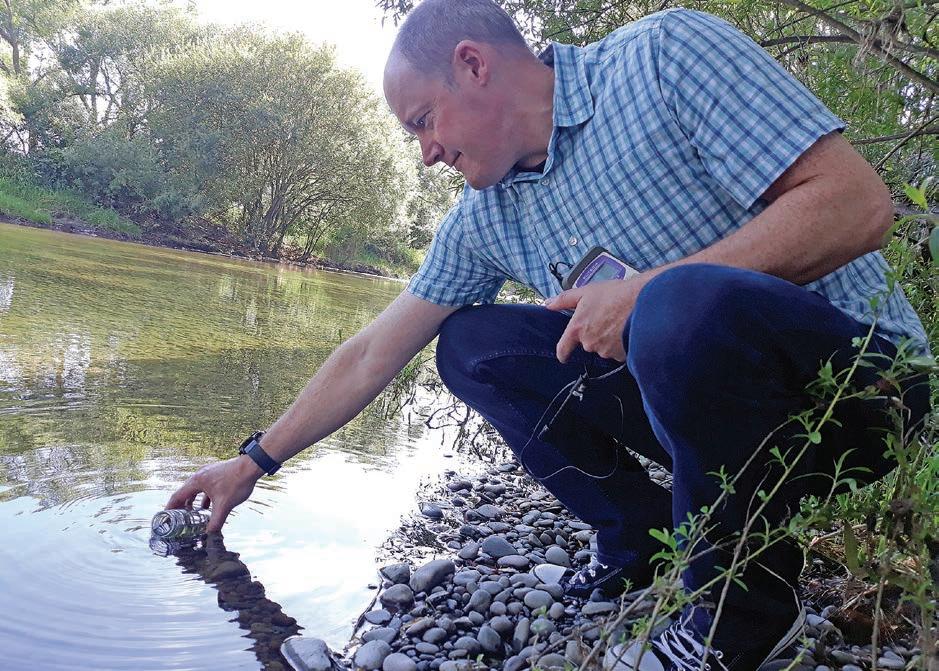
17 minute read
It takes two to test innovations
It takes two to test farm innovations
Staff reporter
THEY say two heads are better than one, and now farmers and rural professionals are being urged to team up to test innovative ideas that could lead to significant improvements in farming systems.
The Rural Professionals Fund, established in 2020 by the Our Land and Water National Science Challenge, is now accepting applications for the third round of funding to support projects that could benefit farming communities.
Applications close on Friday, August 12, with projects to begin on October 1.
Our Land and Water chief scientist Rich McDowell says Kiwi farmers are creative and resourceful, often trying out new ideas and practices because they are curious to see what will happen.
“As a science funder, we’re used to hearing big ideas from scientists seeking research funding. But we wondered, how many promising ideas are stuck on one farm – or inside a farmer or rural professional’s head? Loads, it turns out.”
The third round of the fund will invest up to $75,000 in projects to rapidly test ideas and innovations within a short nine-month time frame.
Project teams must include a rural professional and a farmer or grower.
The team also must include a person with relevant scientific or technical expertise, or mātauranga Māori, or kaupapa Māori research expertise (this may be the rural professional in some cases).
Projects must align with the Our Land and Water objective: to improve Aotearoa’s land and water quality for future generations, while enhancing the value of the primary sector to New Zealand.
Communicating the results of both successful and unsuccessful projects to the wider rural profession and farming community is a crucial part of the process.
“We are particularly interested in projects that will help diversify land use and practices, effect behavioural change and create new ways of doing things across the agri-food and fibre system,” McDowell says.
“We want to see concepts emerge that can generate evidence and move into action quickly, the fund allows us to quickly explore a lot of options, and encourage and resource more innovators and entrepreneurs to test their good ideas.”
Chief executive Jo Finer says the NZ Institute of Primary Industry Management is delighted to support the opportunity to pilot innovative ideas that drive improvement on farm.
“Rural professionals play a valuable role as trusted advisors to farmers and this provides them with a unique opportunity to generate ideas which can be tested with the support of funding.”
Last year, the fund received 47 applications, of which 12 projects were funded and are now close to completion.
These projects encompassed a wide variety of farm systems, industries and ideas.
The projects all have one thing in common: if the concept was proved, it could create real benefit for farming communities, our land, or our water.
SHARING’S CARING: Our Land and Water chief scientist Rich McDowell says the funding will help get good ideas off the farm and out to everyone who can benefit from them.
Every farm is unique, even if they’re neighbours. That’s why you need a vaccination programme that fi ts your farm’s unique requirements.
Find out more and apply for funding: ourlandandwater.nz/RPF-apply
16 FARMERS WEEKLY – farmersweekly.co.nz – June 27, 2022
News Emissions reductions still a slow process
Ants Roberts Ravensdown
Neal Wallace neal.wallace@globalhq.co.nz
DON’T expect a massive reduction in greenhouse gas emissions from current technology, farmers attending the South Island Dairy Event in Oamaru have been told.
Ravensdown chief scientist Ants Roberts says for each kilogram of food eaten, cows produce about 21 grams of methane.
Annual emissions of enteric methane from a typical North Otago or Canterbury dairy farm range from seven to 22 tonnes/ha, primarily from microbially digested feed in the rumen, of which 95% is belched with the rest flatulence.
Higher quality feed reduces those emissions.
Roberts says there are other steps farmers can take to reduce greenhouse gas production such as reducing annual nitrogen application rates, using inhibitor-coated nitrogen fertiliser and optimising soil fertility through regular testing.
Reducing peak cows, improving per cow performance and reducing replacements from 23% to 18% can lower methane emissions by between 2% and 11%.
Research trials indicate that sowing plantain into a pasture can lower nitrous oxide emissions by 28% compared to ryegrass while growing fodderbeet instead of kale can lower nitrous oxide emissions 39%.
Roberts says other measures include minimising effluent storage time in anaerobic ponds, capturing effluent through a stand-off pad or barn, using all effluent as a substitute fertiliser and keeping animals off pasture during wet periods to avoid urine deposition and soil compaction.
He says carbon in the soil is not counted as sequestration because it is not permanently locked up.
It is subject to microbial degradation and the degree of carbon loss depends on management practices such as irrigation, stocking rates and cropping practices.
In the past three to four decades, soil carbon on flat land has declined by between 0.32 to 2.9t/ha a year on volcanic ash, gley and peat soils, but on stable hill country slopes it has increased 0.6t/ha a year.
Roberts says if farmers were to be credited for the carbon captured in their soils, then they would also have to pay for any that was subsequently lost.
Landcare Research is sampling 400 sites around the country to measure soil carbon with those sites revisited and measured in the future.
Roberts says research to find potential solutions to reduce greenhouse gas emissions include breeding low methane emitting sheep and cattle, technology that is up to five years away but could give 10% reduction.
A vaccine is at least 10 years away and could reduce methane emissions by 30%, but a rumenbased methane inhibitor could be sooner, up to five years away, and provide a 30% reduction.
EcoPond, a system of reducing methane from effluent ponds, removes 95% of the methane emissions by killing the methanogens in the pond, as well as killing 99% of E.coli.
It will also potentially decrease phosphorus leaching from effluent blocks by 90%.
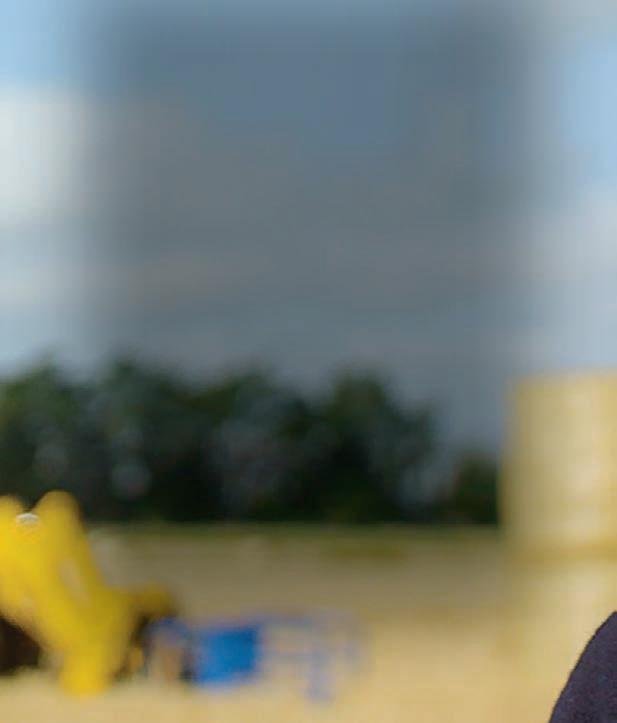
JEFF ROBINSON
...is happy to ‘talk up’ the benefits of his JCB SERIES III to his contracting business. We challenged him to see the advantages of owning a second one.
Here’s what he said...


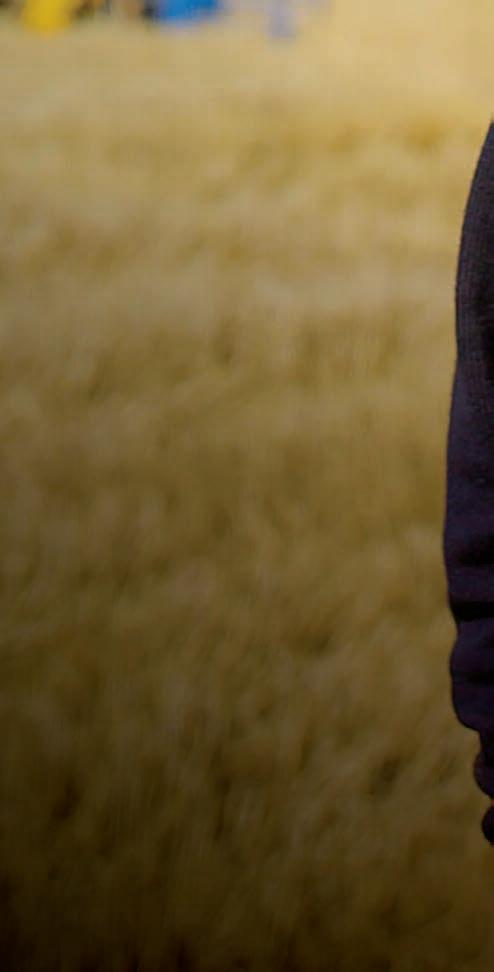
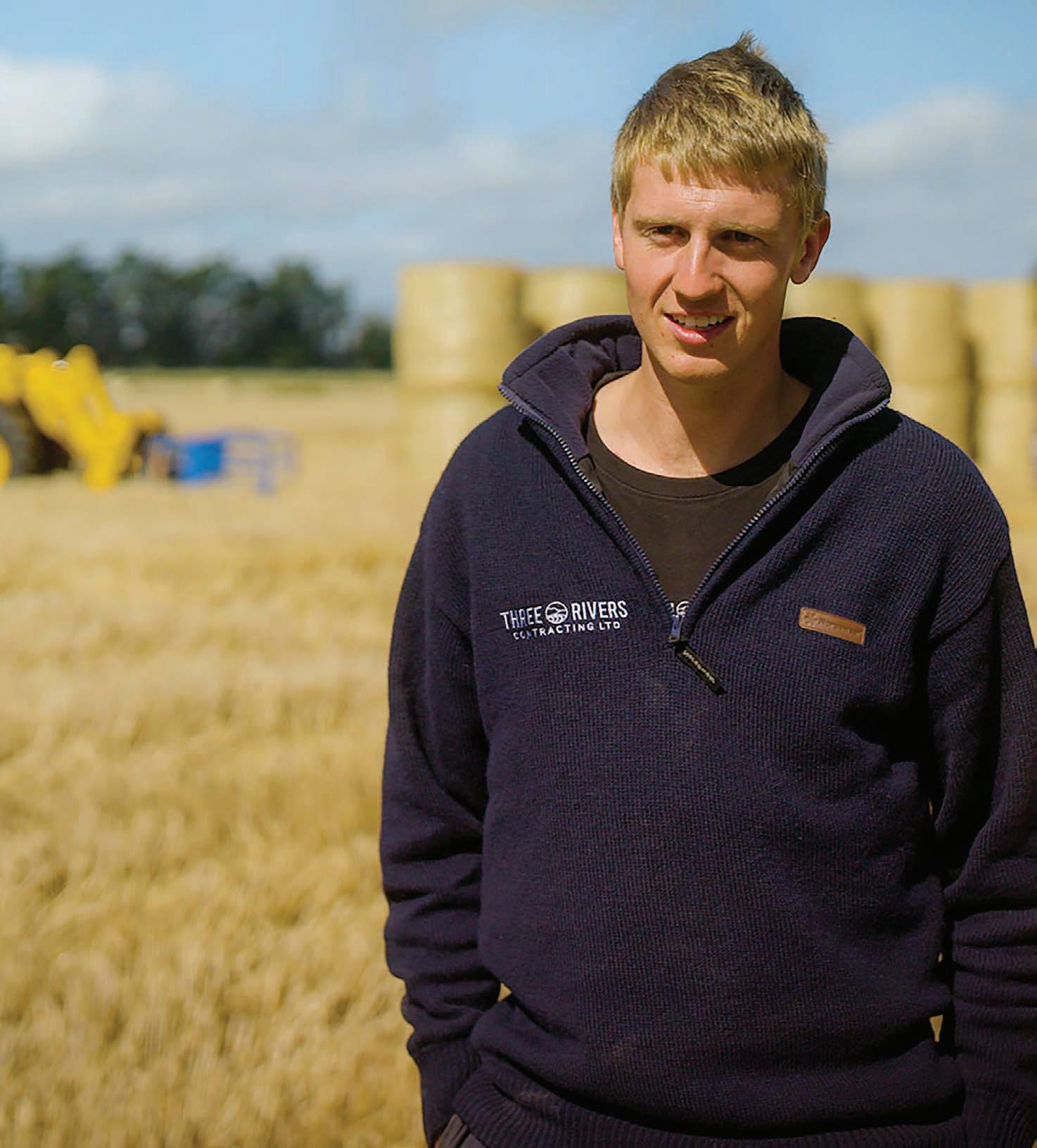

Jeff Robinson of Three Rivers Contracting in Southland relies on his JCB SERIES III AGRI to speed up operations, both in the yard and out in the field. In fact Jeff loves his JCB so much, we thought we’d drop off a brand spanking new JCB SERIES III AGRI SUPER, leave it with him for a day and return the next day to see if he would consider the benefits of having two JCB’s in his fleet. Already familiar with the efficiency, manoeuvrablity and speed of his JCB LOADALL, Jeff was in no doubt how much his operation would benefit from having a second one.
WHAT COULD YOU DO IN A JCB SERIES III LOADALL?
Acland takes on deputy’s role with Beef + Lamb
Annette Scott annette.scott@globalhq.co.nz
MT SOMERS Station farmer Kate Acland has been appointed to the re-established role of deputy chair at Beef + Lamb New Zealand.
Acland, elected as the Northern South Island director in April 2021, takes up the position to help spread the increasing workload for chair Andrew Morrison.
While Morrison plans to seek re-election as chair in 2023 he says the decision to re-establish the deputy chair role comes from the ever-increasing workload in a period of significant change for farmers.
“Kate [Acland] has an excellent mix of rural expertise and business acumen to support us in achieving our strategic goals and objectives of helping farmers run thriving and profitable farm businesses.
“I will continue as chair and look forward to Kate’s assistance in her new role as deputy chair.
“The sheep and beef sector is facing intense challenges and we will continue to advocate and work hard on behalf of our farmers for sensible and practical policy settings,” Morrison said.
Acland is looking forward to her new role and the challenges ahead.
“I’m enormously passionate about our sector and the people that are a part of it, and I strongly believe Beef + Lamb NZ plays a key role in its future success.
“I’m excited about the challenge and looking forward to supporting Andrew [Morrison] and the wider team,” Acland said.
Before moving to her husband David’s family farm in the foothills of Mid Canterbury, Acland developed her own vineyard, winery, processing and export business in Marlborough.
Mt Somers Station runs 30,000 stock units in a mix of sheep, beef and deer, as well as an 850-cow dairy unit.
The farming operations also include a standalone honey business with 500 hectares of native vegetation and beech forest providing the food for 400 hives that produce manuka, honeydew and clover honeys.
The Aclands have three children and employ 30 staff across their diverse group of businesses.
Acland is also a Ruralco director, a director of the Wool Research Organisation of NZ and managing director of Marlborough-based Sugar Loaf Wines, while David recently took on the role as Federated Farmers Mid Canterbury provincial chair.
The couple also own off-farm businesses including the local Mt Somers general store and the Staveley Farm Shop and Café.
Andrew Morrison Beef + Lamb NZ

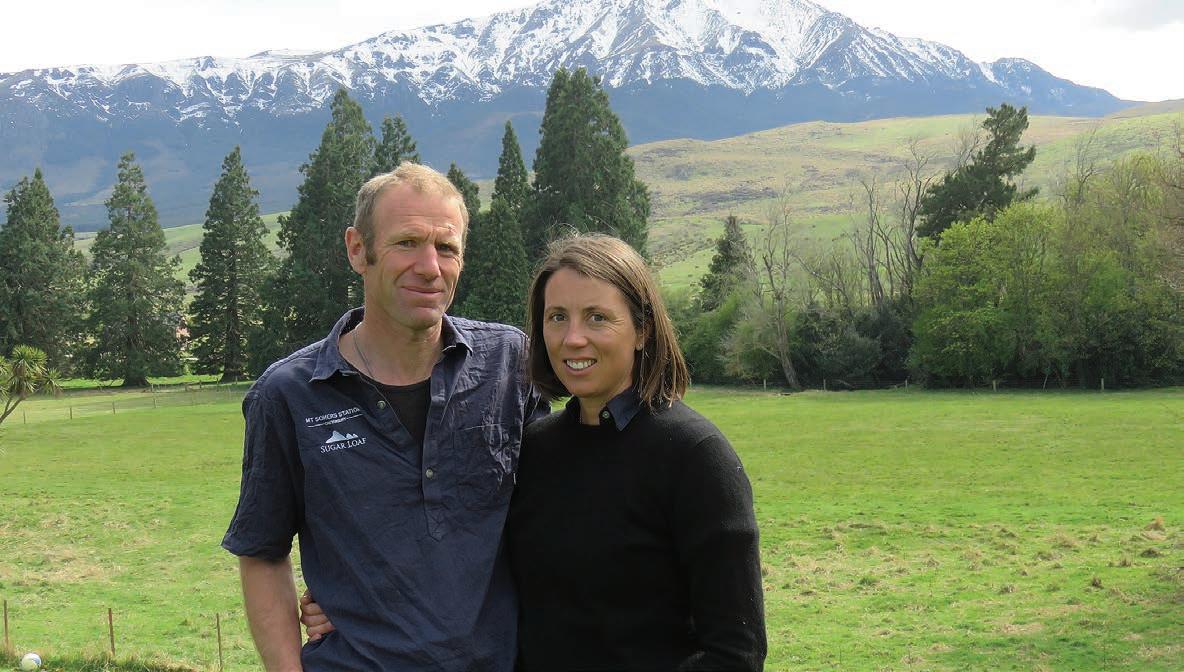
ON TOP: Kate and husband David Acland on their Mt Somers Station property in the foothills of Mid Canterbury.
NILVAX® and MULTINE® . Two tried and proven vaccine options for pre-lamb and beyond.
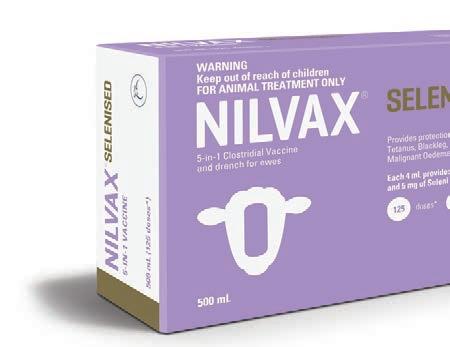

New Zealand’s leading 5-in-1 vaccine range with multiple options for supplementation1 .
Every sheep farm is unique, so when it comes to vaccination, you need a programme that fi ts your way of getting things done. NILVAX is the only pre-lamb vaccine that provides up to 4 months protection for lambs. This gives you the fl exibility to vaccinate your ewes earlier to avoid sleepy sickness*, or vaccinate your lambs later due to the longer duration of protection provided via their mother’s colostrum. MULTINE gives you multiple options for supplementation of Vitamin B12 or selenium in combination with New Zealand farmers favourite 5-in-1. This means you can get everything you need and nothing you don’t.
NILVAX and MULTINE. Two tried and proven pre-lamb vaccine options made right here in New Zealand, that give you fl exibility and effectiveness for your farm.
An update from Andrew Morrison, Beef + Lamb New Zealand Chair, and John Loughlin, Meat Industry Association Chair
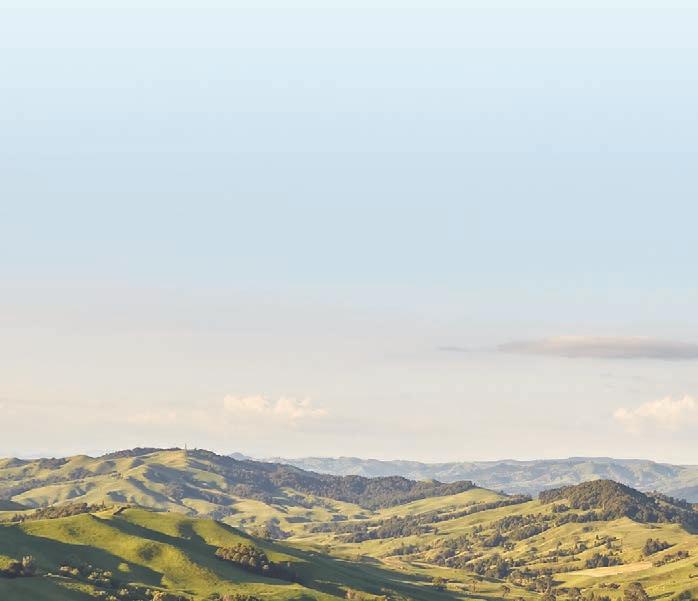
June 2022
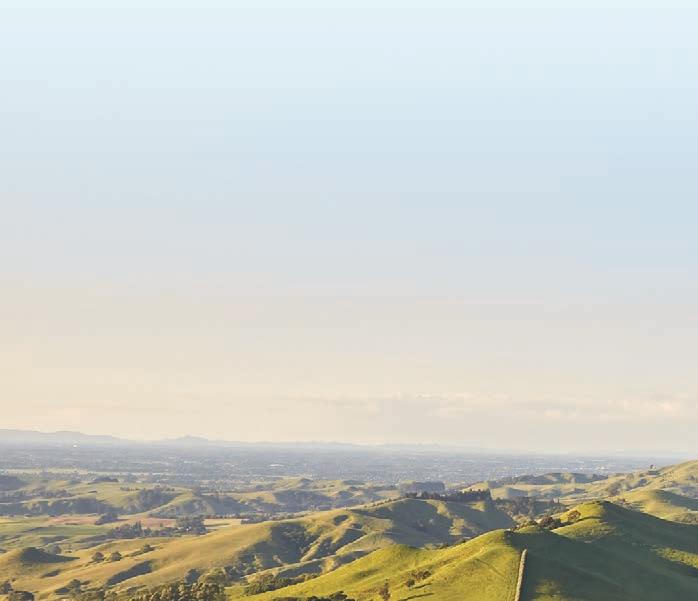
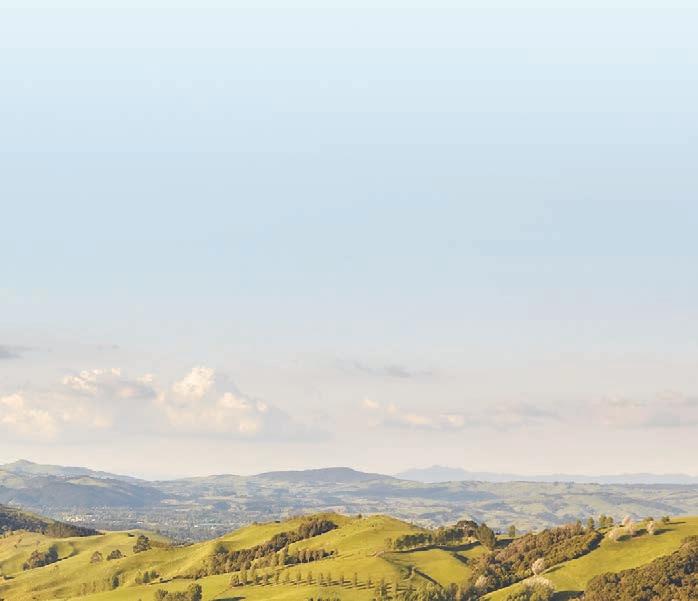
Agriculture emissions pricing recommendations
Recommendations on an agricultural emissions pricing system as an alternative to already-legislated entry into the Emissions Trading Scheme (ETS) have gone to the Government. B+LNZ and MIA representing the red meat sector, along with others such as DairyNZ and Federated Farmers and iwi, are part of the partnership that developed the recommendations. The recommendation is for a farm-level levy system. While not perfect, it is significantly better than the ETS and gives farmers more influence over their future. Farmer
feedback was critical in refining the recommendations
and the system can be further refined and improved over time – this is not the end point. Farmers have expressed a high level of concern about this process – this was made clear through the consultation period. The implications for farming business viability have therefore been at the forefront of our minds. While we strongly support the recommended farm-level levy approach and believe it’s better than the ETS, what’s crucial is the pricing applied under it. B+LNZ therefore also released additional modelling on the financial implications of the recommendations. This modelling based on over 400 individual farms reinforces the need to take a cautious approach on the prices applied to agricultural emissions – we’ll keep pushing hard for caution around the pricing of emissions.
What has been recommended?
The farm-level levy system recognises what individual farmers are doing on their farms. Key recommendations include: • farmers calculating their methane and nitrous oxide emissions based on what they’re doing on-farm, not on national averages • unique prices for both methane and nitrous oxide • a maximum starting price for methane to provide certainty • credit for sequestration from a wider range of vegetation than currently recognised in the ETS • incentive payments taken off costs for using technologies and practices that reduce emissions • money raised in the system goes back into research and development for further agricultural emissions reductions. There’s information on the B+LNZ website on how farmer feedback helped refine the recommendations – see the web address below.
What does this mean for farmers now?
We know emissions pricing is confronting for some farmers and could significantly affect profitability. We’re focused on minimising costs and supporting farmers to make changes to their farm systems to reduce emissions. Unless the Government decides to bring agriculture into the ETS beforehand, pricing won’t happen until 2025 – there’s time to get prepared. Any actions you can take to reduce emissions on-farm now will put you in a better position when pricing is introduced. The first step is to know your on-farm emissions numbers – eg through the B+LNZ GHG Calculator online or a B+LNZ workshop.
Why do we need the He Waka Eke Noa approach?
The Government wanted to put agriculture into the ETS in 2019, but we and other partners convinced them to work with us on an alternative as we believed the ETS would be disastrous for farmers. With the legislation already in place to price agricultural emissions, saying ‘no’ to pricing wasn’t an option. The ETS does not recognise the range of on-farm sequestration available (particularly natives). If agriculture joined the ETS, the methane price would also be linked to the carbon price, which would not recognise methane’s different warming impact and the price of carbon is expected to continue to rise rapidly. This would have a significant impact on sheep and beef farming viability, as B+LNZ’s modelling shows (go to the web address below for more information about the modelling).
What about the emissions reduction targets?
B+LNZ has and will continue to advocate for science-based emissions reductions targets, separate to our work on He Waka Eke Noa. We don’t believe the current methane targets in the Climate Change Response (Zero Carbon) Act are justified based on the latest international science about methane’s warming impact. We’re continuing to advocate, along with DairyNZ, Federated Farmers and others, for the Government to report on warming as well as emissions and for the use of GWP* as a more appropriate metric for setting targets.
What are the next steps?
The Government is considering the recommendations and public consultation is expected later this year, so farmers will likely get a further opportunity to provide feedback. By December 2022 the Government will make its final decision on how agricultural emissions will be priced. We’ll work with He Waka Eke Noa partners over the coming months to inform the Government’s analysis and won’t stop working to get the best outcomes for farmers, particularly on issues like pricing.
Trade optimism follows WTO meeting
Eric Frykberg
A SERIES of agreements at the World Trade Organization (WTO) last week are being seen as good for New Zealand, even though they will have little direct impact and even though agricultural reform completely failed.
That is because the agreements revitalise an institution that had been growing moribund against New Zealand wishes.
The agreements came at the 12th conference of WTO Ministers (MC12), which extended its schedule for a day and then sat all through the night, finally reaching consensus just before dawn on several issues.
New Zealand’s trade minister Damien O’Connor was there, though he left for other meetings before the end of the talks.
MC12 was the first ministerial meeting since 2017 and became bogged down in lengthy and sometimes heated argument before reaching agreement just before sunrise.
“At last, we delivered!” the WTO Director General Ngozi OkonjoIweala tweeted ecstatically.
“A successful MC12 with 6 plus solid deliverables! Sincere thanks and congratulations to Ministers, Ambasadors, Senior Officials and Secretariat Staff for making this work!”
The breakthroughs included a deal to reduce subsidised fishing, which New Zealand and other nations say is a dangerous practice that causes environmental damage.
Other issues included a partial waiver of intellectual property (IP) rights for Covid-19 vaccines.
And there was an extended ban on e-commerce tariffs, which are widely thought to be be unenforceable anyway.
None of these changes are of direct benefit to New Zealand.
But Stephen Jacobi of the New Zealand International Business Forum says the fact that agreements were reached was a good thing for countries like New Zealand.
“The delegates can go home happy knowing that they did a good piece of work,” he said.
“It means the WTO is starting to function again as it should, which is the world’s trading partners coming together to work out how the multilateral trading system should operate.”
In tangible terms, New Zealand has always wanted an end to trade-distorting subsidies for agriculture, but there was no progress on this, as there hasn’t been for 20 years.
All that happened was a commitment to talk some more about it.
Okonjo-Iweala spoke candidly about this failure in her closing address at the conference.
“While we all agree on the vital importance of agriculture in our economies, differences on some issues, including public stockholding for food security purposes, domestic support, cotton and market access, meant that we could not achieve consensus on a new roadmap for future work,” she said.
“But here too, members found a renewed sense of purpose: they are determined to keep at it on the basis of existing mandates with a view to reaching positive outcomes at MC13.”
There were other omissions too, such as a failure to revitalise the inner workings of the WTO, by restoring a quorum of judges to its appellate body.
But Jacobi thinks the agreements that were reached constitute a milestone.
“The WTO is back in the business of making decisions and that is a good thing.
“It was a more successful meeting of the WTO than we have seen in recent times.”
This view was shared by Julien Chaisse, a law professor at the City University of Hong Kong.
He told Al Jazeera the agreement represented a “great dawn” for international trade and multilateralism.
The only tangible outcome of MC12 that affects agriculture was a decision to exempt food bought for humanitarian purposes from export prohibitions. This was an attempt to alleviate worries about food security because of the war against Ukraine.
But New Zealand exports different food products to different markets and does not have export bans anyway, so it will not be affected.
New Zealand has repeatedly said it wants a robust WTO to guarantee that trade is done acccording to agreed international rules.
But in fact, this country has done well, with or without the WTO.
In the five years between this WTO Ministers meeting and the previous one, total primary sector exports rose from $38.2 billion to $54.3 billion annually.
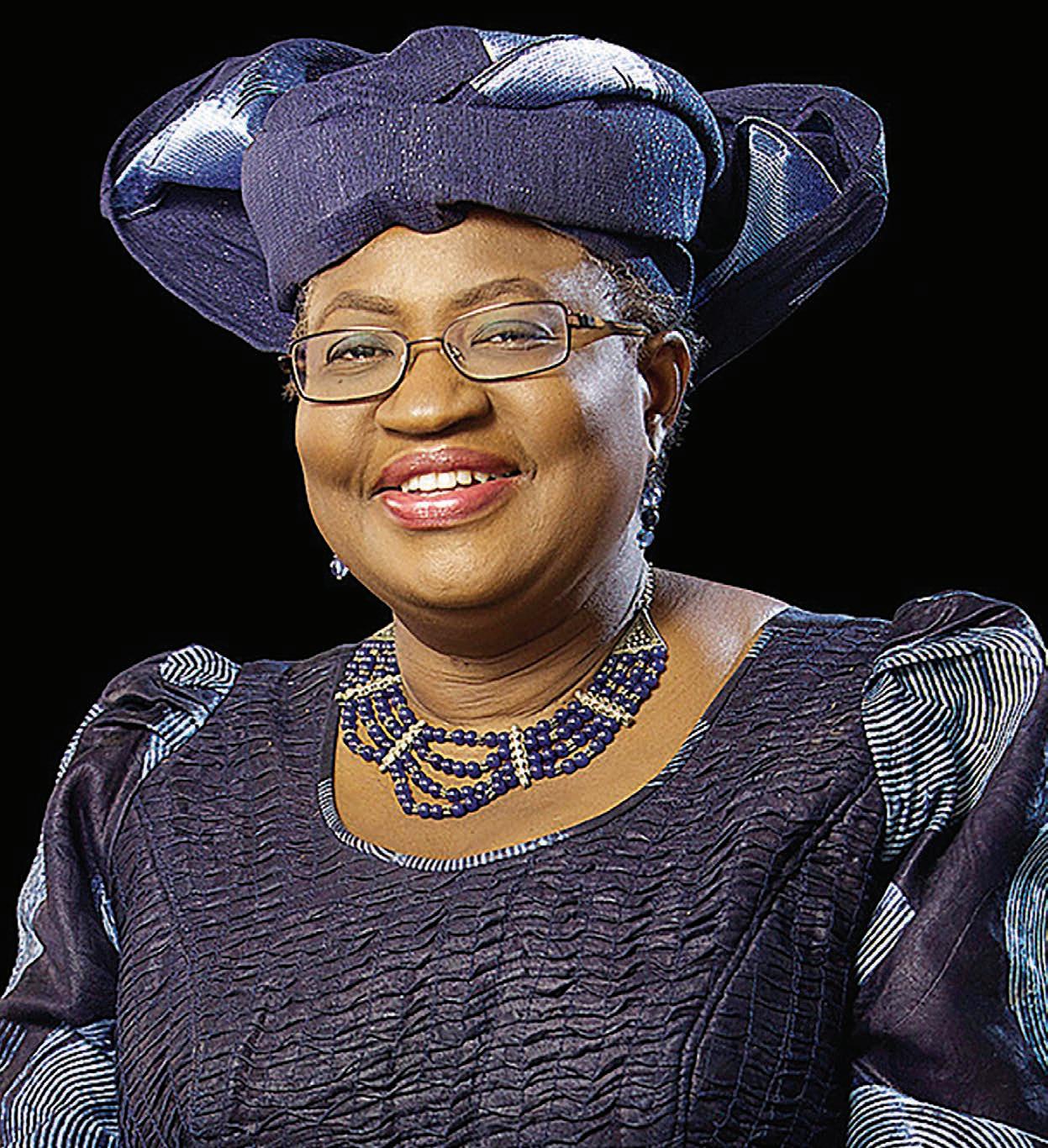
NEXT TIME: WTO Director General Ngozi Okonjo-Iweala says while progress was slow at MC12, members were determined to keep at it on the basis of existing mandates with a view to reaching positive outcomes at MC13.
Thinking about a career in the rural sector?
Join Olivia Weatherburn on her brand new podcast as she talks with young Kiwis working in the sector, to provide an insight into some of the many exciting career pathways available, how to get there and why they love it.
In our latest episode, Cheyenne Wilson shares with us her journey which has taken her from starting her rural career through calfrearing, to landing a role as a Graduate Maori Relationship Partner at DairyNZ.
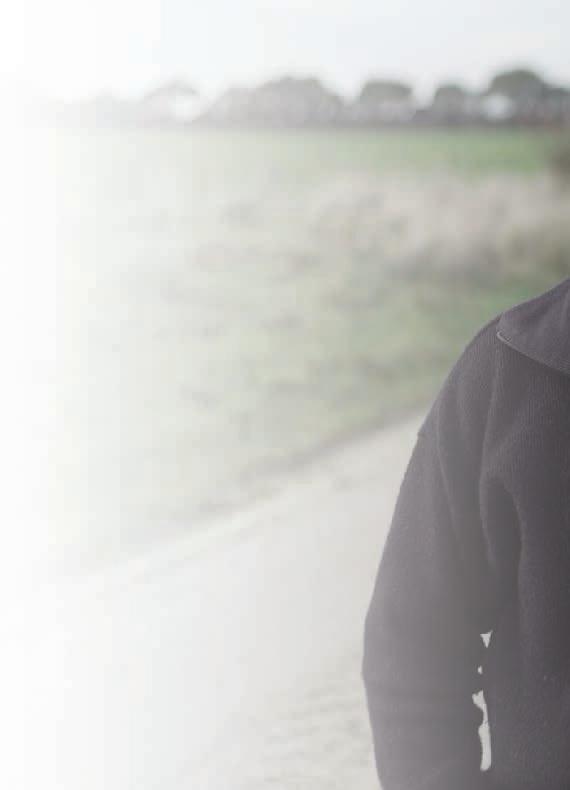
PODCAST WITH Olivia Weatherburn


